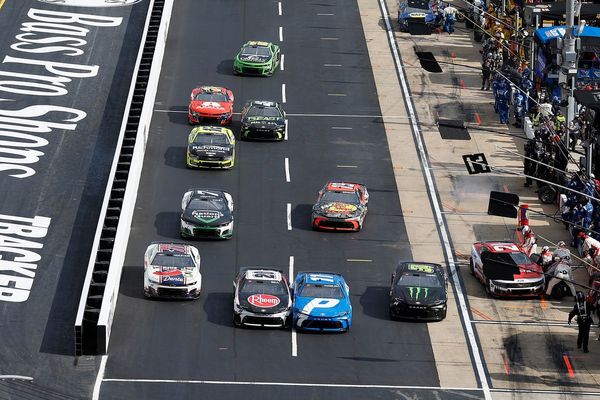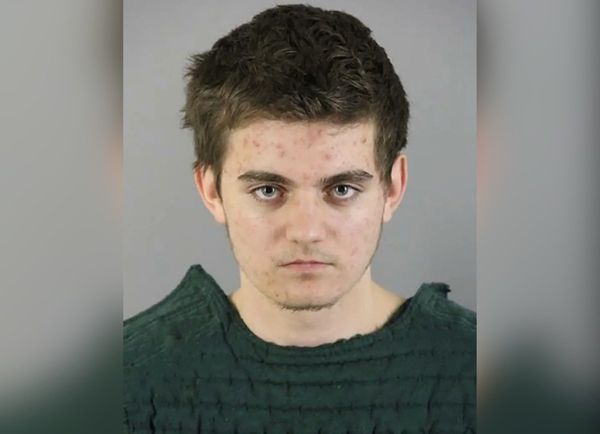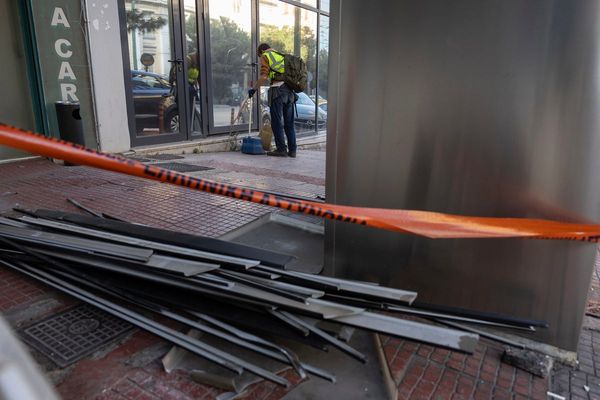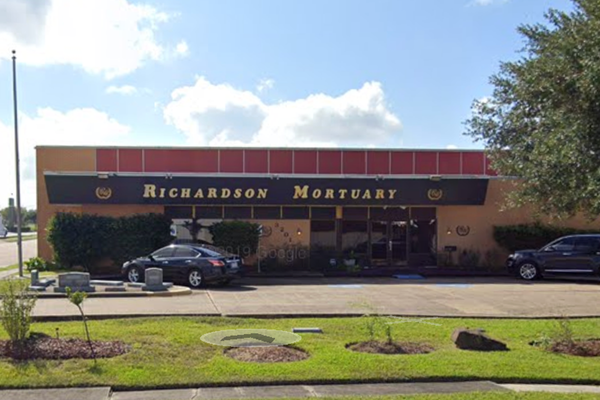
It’s been a long year for Shane van Gisbergen. In his first season racing full-time in the USA, the New Zealander clocked up 33 starts in the NASCAR Xfinity series and 11 in the Cup series. After already changing bases once in his career, to Australia, he has criss-crossed North America and had to learn how to adjust to a new life.
Understandably, what he is most looking forward to in the off-season is getting back to New Zealand – where, of course, he will go racing again.
“I’ll do seven Sprintcar races in New Zealand with the United Truck Parts team,” he says, ahead of finishing third at Western Springs over the weekend. “That is who I drove for in Sprintcars two seasons ago over there. I love Sprintcars, I grew up racing quarter midgets at Western Springs.”
That is SVG in a nutshell. He loves to race, anything, almost anywhere. His move to the NASCAR comes after a 17-year stint and three titles in Supercars, during which he also managed to compete in lots of other things that took his fancy. Like, the Bathurst 12 Hour, which he won (in 2016) in a GT3 car; or the Bathurst 6 Hour, which he won in 2021 in a Production Car. Or the World Rally Championship, placing third in WRC2 on debut in the 2022 Rally New Zealand. Or 24-hour races at Le Mans, Daytona, Spa. Or drifting. Or…
But the world knows him now as a NASCAR driver, and the first in a generation to win on his Cup debut, at the new Chicago street course in 2023. This season has been a learning one, a full-time Xfinity programme with Kaulig Racing and selected Cup starts with Trackhouse Racing the precursor to stepping into Cup permanently next year.
“Everything is different, especially on the oval side,” he says. “That has been a huge learning experience and I can’t single out one thing, really.”

If road racing is where van Gisbergen is expected to shine, on the ovals, he is a rookie and there is a lot to get used to.
“It’s a completely different sport,” he says. “A different style of racing to anything that I have ever done. I was open-minded, and I had no expectations about results. For me, I felt like I got competitive at some points of the year. But I have a lot to learn and a lot to get better at.
“I feel like I am ready and looking forward to the Cup series. I am glad I did a year of Xfinity to learn, even though the cars are a lot different. That was the right decision, to do a learning year and to settle into the country and the style of racing, before getting thrown to the sharks in the Cup series.
"My weakness, I would say, is the intermediates - the one and a half mile tracks. I've had some good results, but I've had some pretty average ones as well"
Shane van Gisbergen
“NASCAR races are never easy. You rarely see anyone lead the whole race, there are a lot of people off-strategy and a lot of things going on. There is always something happening. That is what happened in Chicago last year.
“That is the style of the racing here. You have to expect the unexpected. You are never, ever going to have an easy day.”
One race that he might have won was at Watkins Glen in September. Having already won the Xfinity contest the day before, SVG was leading on the final lap, in overtime, but a mistake at the Bus Stop allowed Chris Buescher to pass him for the win. Although he was mad about the loss at the time, that did not last.
“That’s months ago! Racing moves on really fast here, that is one of the beauties of NASCAR,” he says. “Whether you have a good week or a bad week, next week there is another race. A good result gets forgotten about pretty quick, but so does a bad one.

“I moved on from that, but I certainly kicked myself for a couple of days. I would have loved to have won that race, but I made an error and you certainly learn from that. It was an awesome finish and one of the most talked about races on a road course this year. It was great, from that regard.”
One other thing that he has had to learn is how to work with new crew chiefs. On his Cup schedule he worked with Travis Mack but during his Xfinity season he had a change, from Bruce Schlicker to Kevin Walter.
“We were really getting going in Xfinity, getting a lot better at ovals and getting some really good results and then, unfortunately, Bruce had some family stuff [come up] and that kind of put us a bit behind,” he explains.
“I really would have really liked that to have continued with Bruce till the end of the year. He was he was really good for me and took a lot of time and explaining and patience and helping me understand. [Walter is] really good as well but he's a rookie crew chief, like me and and I probably needed someone with experience to help me.
“I don't really know what to ask for yet, especially at tracks I hadn't been to before, so we really struggled at new tracks towards the end of the year.”
It obviously takes time for a career road-racer to feel comfortable on ovals and that is coming, he adds.
“My weakness, I would say, is the intermediates - the one-and-a-half-mile tracks,” van Gisbergen admits. “I've had some good results, but I've had some pretty average ones as well where I've never really been competitive or comfortable. That's where the Cup car and the Xfinity cars are most different, so I'm looking forward to trying the Cup car and getting better at it.”
There is also the small matter of adjusting to the changes that an oval car goes through over the longer races.

“I did the Coke 600 and I felt reasonably competitive there,” he reflects. “I remember struggling at the start [of the race] and I passed Joey Logano, who ended up winning the championship!
“We had some good moves and we're working our way up, but then I did Vegas at the end of the year, and it was the opposite. I was at the back, really struggling, feeling uncomfortable, and it doesn't take much in these cars.”
NASCAR's Drive for Diversity programme was probably not implemented to uncover a race-winning driver from New Zealand
You can hear the competitive edge in his voice. Van Gisbergen has made a fast impression at every level at which he has raced, and it would be foolish to think that a driver of his talent will not adapt to left-turn-only racing on ovals. It's simply a matter of when that happens.
In the meantime, van Gisbergen, partner Jess and their dog Ronald are living the American Dream...

Tasmanian pioneer
NASCAR's Drive for Diversity programme was probably not implemented to uncover a race-winning driver from New Zealand – and getting one from Tasmania was probably an accident as well. But that is what happened nearly two decades ago when Marcos Ambrose packed up his wife Sonja, their daughters and two V8 Supercars championship trophies to take on the USA.
Ambrose moved to the USA in 2006 and raced for the Wood Brothers/JTG Daugherty team in the Craftsman Truck Series for a season, then for two in the Busch/Nationwide [now Xfinity] series before moving to Cup in 2008.
“It took three seasons of NASCAR to feel like I knew what I was doing and was confident behind the wheel on all the tracks, not just some of the tracks,” he says. “Back when I was running, you used to have a couple of hours of practice before qualifying, and it was like spread over three days, so you had a bit of chance to learn the craft. With the current rules in NASCAR, you've got 15 minutes of practice, then straight into qualifying and into the race.”
In 77 Busch/Nationwide races he took five victories, and in Cup he won twice at Watkins Glen, in 2011 and 2012.
“Road races were easier for me, pretty simple,” he explains. “You set the car up square, you got it to brake straight and to get forward drive, and then you work out the corners after that.
“Whereas, when you go oval racing, the cars are fully asymmetric in their set-ups. You've got different cambers on each wheel, different tyre compounds on each wheel. Basically you've got different spring rates everywhere and the car's trying to hook your left all day, and it doesn't want to really run.
“I just remember a track like Pocono, for instance. We were getting the cars really low and we had a couple of spring rate options in the back of the car. We could run a 180-pound right-rear spring or we could run 1800 pounds! It was coil-bound, or we ran a spring that was hard enough to hold the car up and keep it off the ground.
“The track changes so much. You go from the day to the night which changes things as well. If your car was in front, you could lead 30, 40 laps, no problems. You put yourself back in 18th or 20th in the dirty air and you can't make any progress. So really, it's about track position during the night and being smart with the strategies and the pit stops.
“The cars were awesome, but really, the whole thing was fantastic.”








